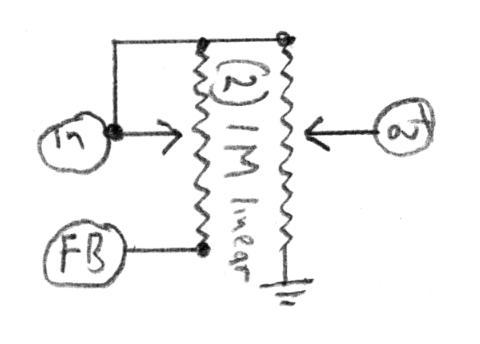Historically, very few recordings would have been made with an OP-6, since it's meant to be a lightweight portable unit for broadcast. Possibly the odd radio music remote from various dinner/dance ballrooms. Most things we hear made with RCA amp are done with either inclusive console amps or the modular plug-in types, all of which are 30-40 dB types. In a console, you have multiple amps in series, with attenuators and bus losses between each.
I had a singer on a record project last year who stood 3 feet back from a ribbon that fed a BA-2, which, wide open, consistently delivered peaks approaching +25, which means the ribbon was putting out -25 given her delivery level. I frequently have a ribbon on guitar amp or as drum room pickup, and have to use a 20 dB pad in front of a 40 dB amp; I get sufficient level to the recorder with 20 dB of net gain. If I put a ribbon pair 10 feet back from a drum kit, and feed a 75 dB Gates amp, I typically have the volume controls set around -30 to avoid peaking the recorder.
A Shure SM-7 puts out very similar levels.
So, I'd ask if the 44 and 77 have been serviced since you got them. They can work, but not be up to snuff, the ribbon material can get brittle with age, oxidation at the ribbon clamps can increase noise, etc etc etc. They will be lower output than many modern ribbons, but not unusable.
All the ribbons I have sound more correct feeding transformer coupled preamps with unloaded secondaries, they sound lesser feeding anything modern transformerless that I've tried. I have not tried the new breed of ribbon preamps like the AEA, etc.
If I were going DIY for ribbons, I doubt I'd ever plan anything with more than 65 dB gain, I'm not wild about the idea of excessive throw-away gain, and in all the high gain vintage tube amps I've tried, the noise floor above 70 dB setting generally renders the amp useless for critical work. The amps that have that sort of gain are almost always remote amps for voice work sent over noisy telephone lines, like interviews from the new hardware store, etc, situations were the gain is priority, and the noise really isn't.
Lassoharp did a BA-2 mashup with an additional tube for higher gain, maybe his schematic is still posted here somewhere. Lots of good options like that for DIY that are much easier to implement than an OP-6. If one really needs the OP-6 thing, one probably really needs a real OP-6, since the iron contribution is a huge part of the picture.

